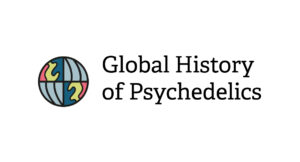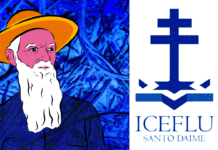- Nectar of the Blue Goddess: Consuming Soma in Bengal, India - December 11, 2023
We have drunk Soma; we have become immortal; we have obtained the light; we have found the gods.
Ṛg Veda (8-XLVIII-3)
As evidenced in the Ṛg Veda, an archaic Sanskrit text of the late Bronze Age, soma (hereafter Soma) is the first recorded psychedelic, i.e., “mind-manifesting,” substance to be used in both a pharmacological and religious context. More than 114 hymns in Book Nine of the Ṛg Veda praise Soma as the favored drink of gods and humans and associate the deified vegetal compound with healing and longevity as well as ecstatic, self-transcendent states of consciousness. Although sacramental Soma consumption is historically well established, the psychoactive constituents of this potent, entheogenic, i.e., “realizing the divine within,” libation have been widely contested as no authentic, living tradition of Soma consumption has been known to exist.
Scholars have sought for two-and-a-half centuries to establish Soma’s identity, with Robert Gordon Wasson making an influential case for the Amanita muscaria mushroom in 1968. Wasson’s theory did not, however, account for descriptions in the Ṛg Veda of pressing and filtering Soma, and the sacramental intoxicant of the Vedas has consequently remained a botanical mystery.
Although many theories persist as to the original substance or combination of ingredients that comprised Soma, This article … reveals a living tradition of Soma consumption in an ancient center of Tantric practice in West Bengal, India…
Although many theories persist as to the original substance or combination of ingredients that comprised Soma, this article – and the chapter it is derived from – reveals a living tradition of Soma consumption in an ancient center of Tantric practice in West Bengal, India where it is connected with the evocation of a salvific goddess known as Nīlakaṇṭha, or “Blue-throated,” Tārā.
Find more information on the upcoming Psychedelic Culture Conference.
A Living Tantric Tradition
In November 2018, while I was in Tārāpīṭh investigating the use of psychotropic plants in Vajrayāna Buddhism, I was fortunate to meet a Tantric adept named Ānanda Tīrthanāth who revealed a living tradition of Soma preparation and consumption connected with a “blue- throated” form of the Tantric goddess Tārā. The meeting took place at Tīrthanāth’s home above the banks of the Dwaraka River that borders Tārāpīṭh’s highly renowned Tārā Maa temple.
The Blue Goddess
The name Tārā derives from the Sanskrit verbal root trī, to “overcome or liberate,” connoting her ability to free the mind from inhibiting illusion (māyā). Tīrthanāth explained that Nīlakaṇṭha Tārā’s forename derives from her mythic role in rescuing Śiva from the debilitating effect of deadly poisons that arose when devas and asuras (powerful demigods) used a venomous serpent to churn the primordial ocean to produce an immortality-bestowing nectar (amṛta) from the juices of myriad plants and trees.
According to the amṛta-manthana narrative, the process produced lethal byproducts, which, out of his supreme beneficence, Śiva consumed lest they contaminate the world. As he succumbed to their effects, his throat swelled and turned blue. But the goddess Śakti, manifesting as Tārā, fed him milk from her breasts to antidote the poisons, during which act his own blue cast transferred to his redeemer.
As Tārā’s nectariferous breast milk revived Śiva from toxic side effects involved in the creation of Soma, she became intimately associated with the primal sacrament that the Ṛg Veda praises as the “milk of heaven” (9-LI-2) and which, in Tirthanath’s lineage of Kaula Tantrism, bestows both sensory exhilaration and an entheogenic recognition of the inseparability of the human and the divine, and thus of the adept and the cosmos.

Discover the Indigenous Reciprocity Initiative of the Americas
The Primordial Elixir
Tīrthanāth explained that Nīlakaṇṭha Tārā is specifically associated with transforming toxins into deifying nectar (paramamṛta) and intoxication into liberating knowledge (gyān). He clarified that, in imbibing Soma, initiates partake in the ecstasy of celestial divinities, in particular the nondual gnosis of Śiva-Śakti and the associated state of turiya, a transcendent “fourth state” of consciousness beyond waking, dreaming, or sleeping characterized by sahajānanda, or primordial bliss beyond temporal delimitation.
According to Tīrthanāth, ritual ingestion of Soma continues in the Yoginī Kaula lineage at Tārāpīṭh, although few initiates know the formula for its preparation. Tīrthanāth, who learned it from his teacher, explained that the elixir’s sixty-four botanical and mineral ingredients are blended with fermented rice and buried in a clay vessel underground for a minimum of one month.
According to Tīrthanāth, ritual ingestion of Soma continues in the Yoginī Kaula lineage at Tārāpīṭh, although few initiates know the formula for its preparation.
Ingredients include roots of various non-psychoactive herbs and spices, such as cardamon and curcumin, as well as dried and powdered seeds of highly intoxicating dhattūra, or “white thornapple,” a species of flowering nightshade (Solanaceae) whose seeds contain tropane alkaloids that produce powerful visionary and deliriant (anticholinergic/antimuscarinic) effects.
The initial effects of ingesting Soma, Tīrthanāth explained, are dizziness and a sensation of bees buzzing in one’s head, similarly to the effects of consuming Datura and cannabis in the form of bhāṅg.
A full description of this Soma ceremony can be found in my Expanding Mindscapes chapter. It’s hoped that this account of contemporary Soma consumption in West Bengal, India, will stimulate further investigation of the confluences of pharmacology, religion, and transformational states of consciousness.
This is an abridged version of Ian A. Baker’s chapter, “Nectar of the Blue Goddess: A Living Tradition of Soma Consumption in Bengal, India,” in the edited collection, Expanding Mindscapes: A Global History of Psychedelics, released with MIT Press in November 2023.
Art by Fernanda Cervantes

Shop our Collection of Psychedelic T-Shirts.
Take a minute to browse our stock:
Did you enjoy reading this article?
Please support Chacruna's work by donating to us. We are an independent organization and we offer free education and advocacy for psychedelic plant medicines. We are a team of dedicated volunteers!
Can you help Chacruna advance cultural understanding around these substances?
















